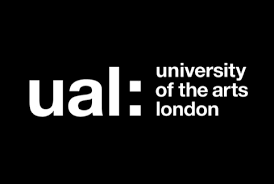STORY, IDEAS, NARRATIVE STRUCTURE – AND SPORT
Clearly one of the most important aspects of any story / screenplay is the idea at the heart of the script. Is your logline one that grabs people’s attention, makes them want to read the script / watch the show?
I am a great believer in looking in strange and unexpected places for story – anything rather than sitting staring at your blank computer screen.
There are so many different places you can go to that will inspire story but for this newsletter I’m going to concentrate on one very particular and incredibly fertile area – sport.
I have always been a huge fan of all sorts of sport in their own right. But I’m also fascinated by potential applications of sport to story.
First there is the most obvious application – telling screen stories about sport. There are so many great examples in both fiction and documentary –
The American writer / director Ron Shelton almost made a career out of the genre of sports movies – ‘White Men Can’t Jump’, ‘Bull Durham’, ‘Tin Cup’ – all great examples of the genre.
Then there are the series like ‘Friday Night Lights’ and ‘Ted Lasso’ – again, both excellent – and examples of where a sports season can shape a single series.
But there are also the real sports stories that feel so inspiring and fascinating. For instance, at the moment the scandal of institutional racism at Yorkshire county cricket club tells us so much about the culture of cricket, the culture of UK society and the very particular world of Yorkshire and cricket. Yorkshire have been historically one of the most successful county teams in the country. Yorkshire was famous for a long time for only selecting players who were born in the county (it was only in 1991 that they did away with this rule). Being from Yorkshire and playing for the county seemed to be a source of great pride and the county over decades built something of a siege mentality based around the cliché (?) of the stubborn, proud, manly Yorkshireman – personified by players turned pundits like Fred Trueman and Geoffrey Boycott.
It’s kind of easy to see how this regional pride / sense of superiority curdles into something less acceptable, fails to move on with the reality of society. This excellent Twitter thread by David Allison is very instructive about grass-roots cricket in the county. https://twitter.com/DavidHAllison/status/1456243665102311428
At the centre of this story, albeit very reluctantly, is Azeem Rafiq, clearly a huge talent whose career never developed as it might have done.
There are so many different aspects to this story that are potentially fascinating and dramatic – whether it’s about the history of the club, the institution in which this racism was allowed to survive and flourish; or about Azeem Rafiq himself – his promise, his successes, and his role in shining a light on the moral murk of this institution. It’s a story that still has a long way to run.
And there are so many other stories / images that spring to mind and feel so full of dramatic and narrative potential –
The image of Nuno Espirito Santo, in his last match as Tottenham manager, receiving huge verbal abuse for the substitution he made. The look on his face as the boos and jeers of 59,000 Spurs supporter ring round the stadium as they collectively turn on him is so sad. The extremes of success and failure. How high the stakes are. It’s hard to imagine being in that situation, the very public recipient of such hate and abuse – and this is something that happens on a smaller scale at so many football matches weekly around the country. What is the human cost of this?
This reminded me of one of the instances from my many decades of watching international sport that has stuck in my mind.
It was in Brisbane, Australia on the final day of a cricket test match between Australia and the West Indies in November 1988. This was the era when the West Indies were completely dominant. Australia were about to lose on the final morning, there were very few spectators in the ground. Chris Matthews, in only his 3rd test match, had bowled badly the day before and according to the local press was about to be dropped from the team. As he walked from the ground having been dismissed in the almost total silence, a lone Aussie voice called out, ‘Say goodbye to test cricket Matthews!’
I have remembered this because I think it was the cruellest, saddest sporting moment I can recall in my years of watching sport. It felt like a specifically Australian moment (apologies to you Aussies reading this!). It was 5% funny and 95% heart-breaking – particularly as it was true. Chris Matthews was never chosen to represent his country after this. What a way to go out. I wonder if he remembers this moment as clearly as I do. For his sake, I hope not.
Two examples of characters at the lowest of low points – lived out in the cruelty of the public gaze.
Similarly, but on a smaller scale, I read a tweet recently from the Barnet Sunday Football League, ‘We have identified the shortage of Referees in North London & would like to do something about. If you are interested in doing the course, please get in contact…’
Having watched my son in many of these Sunday League games, my response to this appeal was laughter. Really? You’re short of referees? I’m actually amazed that anyone in their right mind would referee any adult football match, but particularly these amateur Sunday League games where the level of verbal abuse they receive is horrendous – 90 minutes of grown men swearing and yelling abuse at you. I really don’t know how they do it and retain their sanity – or, more pertinently, why this abuse is allowed. But there’s a great story to be written about this (comedy or drama).
And then at the other end of the scale there are stories of huge success – the most recent and wonderful example being the 18 year old Emma Raducanu winning the US Tennis Open, coming through Qualifying and not dropping a single set.
It was wonderful to be swept up in the excitement and joy of her performances. And in dramatic terms, what might happen to her after this life-changing event is potentially even more fascinating. When anyone achieves this level of professional success this early, the question must be – how can she ever top that? However many grand slams she wins, none will ever have the impact of this first win.
This week England rugby coach Eddie Jones waded into this debate, ‘There’s a reason why the young girl who won the US Open hasn’t done so well afterwards’, implying that off-court distractions had affected her game. The fact that he couldn’t even be bothered to name her characterised the lazy ignorance of what he said.
So there are a few examples of the sorts of stories that could either be written as biopics or fictionalised, used as inspiration for fictional sporting stories – or even as the template for non-sporting stories.
Images and instances of real dramatic impact.
Then there is the aspect of sport as a metaphor for story or as an indicator of the form and structure of story.
One of the sports I love most is long and middle distance running. There are many races that I have found inspiring. I was lucky enough to be at the Athens Olympics in 1996 to watch Kelly Holmes win gold in the 800m. She also won the 1500m and both races are striking for the way in which she settled at the very back of the field before moving her way through from last to first over the final 200 metres.
Perhaps the most memorable example of this tactic is the American Dave Wottle (‘Wottle the throttle’) winning the 1972 Munich Olympic 800m.
https://www.youtube.com/watch?v=5LHid-nC45k
I defy anyone to watch the 1 in 45 secs of this race and not get excited.
But there are so many different ways to win a race – Mo Farah for example in his winning streak, used to get to the front and then refuse to let anyone pass. An equally exciting but completely different tactic / spectacle.
While all of these races are wonderfully exciting and dramatic in their own right, my interest in them in this context is thinking of them as metaphors for narrative structure. Is your story about someone who leads from the front? Or about someone with a lower profile who gradually wins through against the odds? Is your lead character at the forefront of the story throughout, driving the story forward? Or are they in the background, gradually working their way past opposing characters?
The Dave Wottle Munich 800m feels to me like a reflection of perfect, circular narrative structure.
I love the way that sport has a set structure – the 90 minutes, split in 2, of a football match, the 5 days of a test match, the 26.2 miles of a marathon. But within these set structures, every single time something different, unexpected and noteworthy happens. And these structures all exist within a bigger narrative structure – a season, a career.
And then there’s what happens when that sporting career is ended – the dilemma of how to replace that weekly adrenaline rush (BBC’s ‘Fever Pitch: The Rise Of The Premier League’ touched on this brilliantly if sadly with its look at the career of Keith Gillespie and his ongoing gambling addiction).
The instant drama and immediacy of sport sometimes makes me question the lack of immediacy, impact and entertainment of some TV drama / comedy.
The next newsletter will be on Friday November 26th
Until then
Best wishes
Phil
PHILIP SHELLEY
TWITTER: @PhilipShelley1
November 12th 2021






















